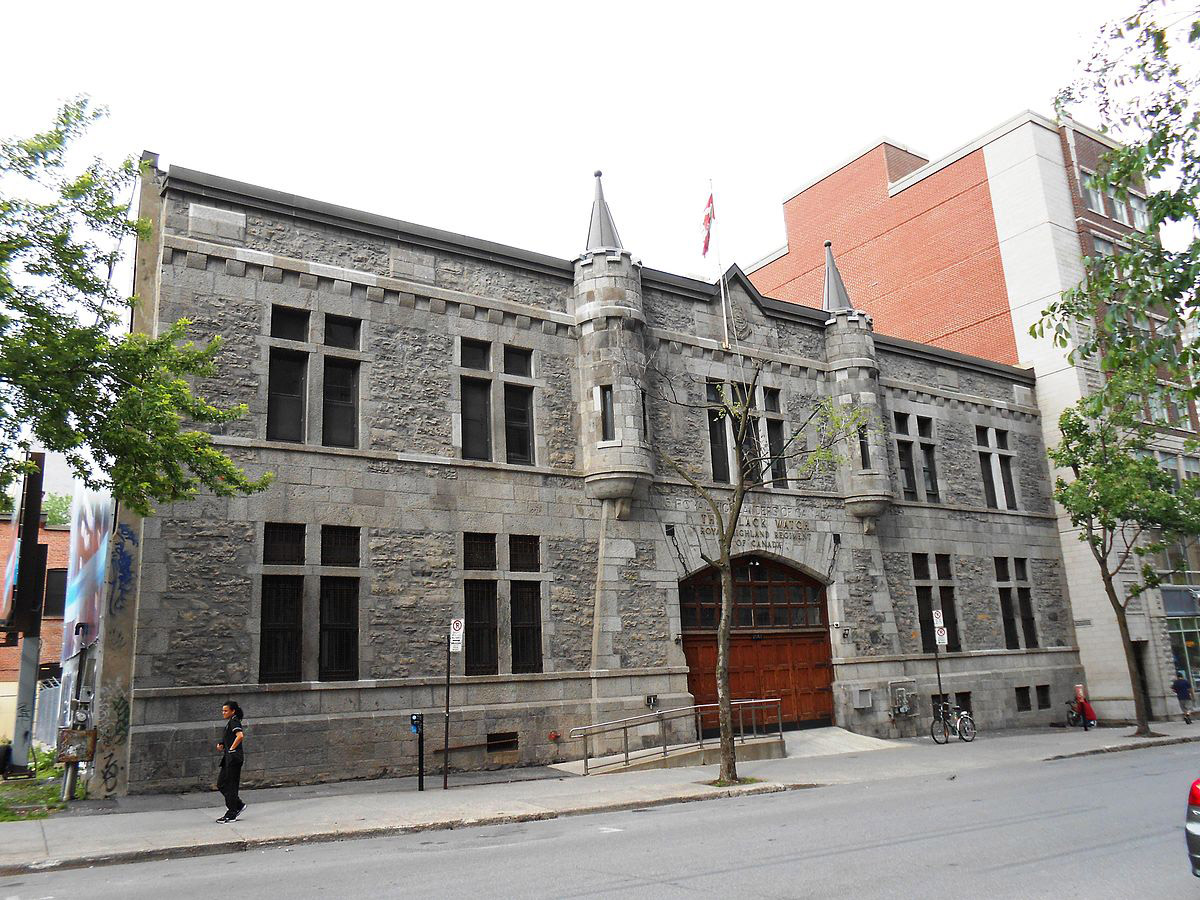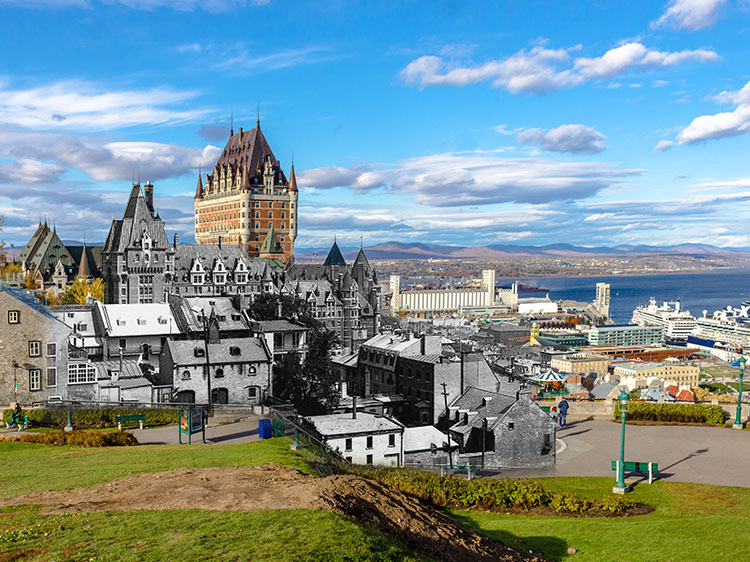Partner City
Montreal
La Metropole
Montreal was founded by the French in 1642 as a mission and fur trade post. After the British Conquest of New France, Montreal grew in importance as a major economic centre, and by 1860 it had surpassed Quebec City as the largest city in Canada, as well as its undisputed economic and cultural centre. Many English and Scottish immigrants settled in Montreal alongside the original French-Canadian inhabitants, giving the city a strong Anglophone presence. Since the late 1800s however, most newly arriving Anglophone immigrants moved west into Ontario and the prairies, and Montreal gradually returned to its original French roots. Today it is the largest French-speaking city in the Americas, and the second largest city in Canada.
We respectfully acknowledge that Montreal is located on unceded Indigenous lands and is historically known as a gathering place for many First Nations, including the St. Lawrence Iroquois, Haudenosaunee and Anishinabeg nations. Today, it is home to a diverse population of Indigenous and other peoples.
Walking Tours
Explore
Montreal
Stories
Montreal Receiving Station

Ukrainian Canadian Civil Liberties Assoc.
Today, Montreal is renowned as a multicultural, cosmopolitan city but throughout its history, it has often been a hotbed of cultural conflicts. When Canada entered World War I, there were at least 17,000 to 20,000 Austro-Hungarian immigrants living in the city, largely from Ukraine, along with 10,000 Austrian Jews. They were mostly working class labourers, making a living in mining and railway construction, as well as working seasonally at the steel works and mines in other mining centres in eastern Canada.
These workers often encountered hostility from English and French Canadians, partially due to cultural, linguistic, and religious differences, but also because Austro-Hungarians workers were often willing to perform more dangerous labour for lower wages. As World War I escalated, incidents across the country such as fires and explosions were blamed on Austro-Hungarian immigrants who were thought to be acting as saboteurs on behalf of Austro-Hungary.
Then and Now Photos
Funeral of General D'Urban
1849
An honour guard lines the street as the funeral cortege of General Benjamin D'Urban passes by. D'Urban was a British General who fought throughout the Iberian Campaign in the Napoleonic Wars. Afterwards he served as lieutenant governor in a variety of British colonies, including British Guiana, Antigua, and South Africa. His racist and brutal policies towards black people in South Africa prompted a parliamentary investigation, and the resulting public outcry led to his dismissal. In 1847 he was appointed supreme commander of British forces in North America, and kept his headquarters in Montreal until his death in 1849.
Champ de Mars
1866
The Champ de Mars was Montreal's main military parade ground. It stands on part of Montreal's old city walls, which were demolished in the early 1800s when they were no longer thought necessary.
St. Jacques Snowdrifts
1869
Snow piled high in a commercial area on St. Jacques Street.
St Jacques Street from Victoria Square
1870
A view east down Saint Jacques Square. A few carriages line the side of the road, which is comparatively empty by modern standards.
Skating Rink
1876
A skating rink has been set up at the Old Port of Montreal. The building in the back is today the Pointe-a-Calliere Museum
A Pastoral Scene
1830s
A painting by James Duncan the perspective of Mount Royal showing the city, which has yet to grow much beyond into the fields surrounding Old Montreal.
Nelson's Column
1884
Nelson's Column towers over horses and buggies in Cartier Square. Erected in 1809, it commemorates Admiral Horatio Nelson and his decisive naval victory over Napoleon at the Battle of Trafalgar only four years before. It's the second oldest Nelson's Column in the world, and the oldest war monument in Canada.
Flooded Cartier Square
1886
A huge flood after the spring breakup has submerged much of the lower part of Cartier Square.
The Lachine Canal
1890
Paddlewheelers and sailboats moored near the entrance to the Lachine Canal.
Streetcars in front of the HBC Store
1895
Two crowded streetcars stopped in front of the Hudson's Bay Company store on Saint Catherine Street. Beginning in 1861, Montreal's trams were drawn by horses, but in 1892 the horses were replaced with electric power, one of the first cities to adopt this new technology. The Montreal Street Railway was known for being at the forefront of innovation, and pioneered the "Pay As You Enter" (P.A.Y.E.) for collecting fares, a system used by virtually every transit system in the world today. Before that a conductor would walk up and down the aisle collecting fares from passengers. Montreal's electric streetcars were finally phased out in 1959.
On the Parade Ground
1897
Soldiers in the distinctive colonial style pith helmets are milling about on the Champ de Mars.
View to the Southeast
McCord Museum Musee McCord M2003.28.1
1907
A view of Montreal towards the southeast.
Crossing St. Jacques Street
1907
Pedestrians crossing a busy St. Jacques street. Notice the cobblestone street and streetcar rails.
The Silver Dollar Palace
1914
Two men loiter on the sidewalk in front of the Silver Dollar Palace, at the top of Jacques Cartier Square.
Building Cartier Bridge
McCord Museum M2011.64.2.2.201
1928
Looking towards the Cartier Bridge as it is under construction, from Victoria Pier.
The Sun Life Building
1930
The massive Sun Life Building once dominated Montreal's skyline. At the time of its completion in 1931 it had the largest square footage of any building in the British Empire.
Dorchester Street Bridge
1931
A couple cars and a streetcar on the Dorchester Street Bridge during the Great Depression. The skyscraper at right is the Sun Life Building, which was just completed when this photo was taken. When it was finished it had more square footage than any other building in the British Empire.
Southeast Vista
1935
Looking southeast across Montreal. In the foreground is McGill University's campus, and in the distance you can see the cantilever style Jacques Cartier Bridge, which was completed in 1930, a few years before this photo was taken.
Canadian Bank of Commerce
McCord Museum M2011.64.2.2.372
1938
Looking down James Street during a royal visit by King George VI in the lead-up to World War II. The buildings have been decorated with banners for the occasion. The building on the left is the Canadian Bank of Commerce.






















































